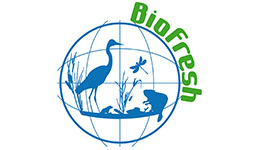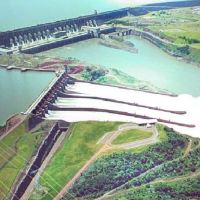An ecosystem services approach for freshwaters

Floodplains can generate a range of ecosystem services. Image: finchlake2000 | Flickr Creative Commons
Ecosystem service approaches to valuing and protecting the natural world have become increasingly popular in the last decade or so, not least in freshwater policy and management.
The ecosystem service approach aims to place defined values on the benefits the natural world provides to humans – such as clean water, food supplies and places for recreation – as a means of strengthening environmental protection in policy and management decision-making.
What is an ecosystem service approach?
In a 2015 review, Julia Martin-Ortega and colleagues defined an ecosystem service approach as “a way of understanding the complex relationships between nature and humans to support decision making, with the aim of reversing the declining status of ecosystems and ensuring the sustainable use/management/conservation of resources.”
They outline four characteristics of this approach. Ecosystem services are: valued on the basis of their benefits to humans; are underpinned by ecosystem processes (e.g nutrient cycling); require interdisciplinary collaboration and stakeholder engagement at multiple scales in their mapping and valuation; and are incorporated into environmental policy and management decisions.
In a 2015 journal article, Stanford ecologist Anne Guerry and colleagues argued that ecosystem service valuations prompt us to better understand linkages and relationships between natural and socio-economic systems, which may encourage better, more sustainable ecosystem management.
The ecosystem services approach prioritises economic and social values over ethical imperatives for environmental stewardship and conservation. This has led to many debates (see this article by Kurt Jax and colleagues (pdf), for example) over the appropriateness of such a human-orientated means of valuing the natural world. In short, can placing economic values on nature really help strengthen the case for its conservation and protection?
Developing a standard ecosystem service approach for freshwaters
According to a new open-access journal article the application of ecosystem service concepts for water resource management has been hampered by the lack of practical definitions and methodologies. Writing in Environmental Science & Policy, a group of researchers from the European Commission Joint Research Centre (JRC) – including MARS science-policy expert Ana Cristina Cardoso – propose a new methodology to assess and value freshwater ecosystem services.
Cardoso and colleagues argue that whilst there is potential for the ecosystem service approach to complement existing freshwater policy (e.g. River Basin Management Plans in the EU Water Framework Directive), a lack of agreed definitions of ecosystem services and approaches for their valuation has limited uptake by practitioners and policy makers.
There are a number of major research projects seeking to develop standardised ecosystem service approaches. In Europe, two FP7 projects – OpenNESS and OPERAs – are seeking to develop methodologies for assessing and valuing services. Two more – MARS and GLOBAQUA – are working to understand how pressures on the health and status of European freshwaters affects their ability to provide ecosystem services.
A four-step approach for assessing and valuing freshwater ecosystem services
The new JRC study – developed within the MARS project – synthesised existing research to develop a new standardised ecosystem service approach for managing freshwater environments. From this literature review (and consultation with experts in the field), the team developed a four step approach which can be adopted by river basin managers.
Scoping
The first step is scoping the range of potential freshwater services. In this approach, the Common International Classification of Ecosystem Services (CICES) developed in 2015 is used. The CICES framework is split into three categories: provisioning, regulating and maintaining, and cultural services (see the MARS Factsheets for more detail on these).
Linking
The second step is to document the interacting links between pressures (such as pollution), ecological status (the ‘health’ of an ecosystem) and ecosystem service provision. This process is intended to support water management decisions which can bring maximum benefits to both humans and the environment.
In Europe, the key pressures on freshwaters are water pollution, over abstraction and human alterations to river channels. However, as we have written about previously, multiple pressures can interact and have potentially unpredictable outcomes for ecosystem health and service provision.
 As shown in the figure to the left, the study describes a circular relationship between humans, pressures, ecosystems and ecosystem services.
As shown in the figure to the left, the study describes a circular relationship between humans, pressures, ecosystems and ecosystem services.
It is important to note here that unsustainable use of ecosystem services (e.g. overharvesting of fish stocks, overabstraction of drinking water) can turn into a new pressure for the ecosystem.
The JRC team then developed a framework based on available evidence to link freshwater pressures with ecosystem services.
The diagram below gives an indication of how different pressures (along the top row) are likely to impact the services freshwaters can provide (left hand row)

Assessment
The third step in the proposed approach is to develop indicators which allow ecosystems services to be assessed and mapped. Indicators for ecosystem services are split into three groups: capacity, flow and benefit (shown in the diagram below)

This ‘cascade’ model includes the capacity (or potential) of the ecosystem to deliver a service; the actual flow (or use) of the service; and the benefits it provides to humans. Quantifying capacity relies on biophysical data (such as groundwater recharge), while flow requires socio-economic data (such as water abstraction demand).
Benefits are valued in terms of human well-being, for example the water treatment costs that are avoided by the presence of self-purifying freshwater wetland ecosystem. This model includes measures of ecosystem service sustainability, such as the Water Exploitation Index.
Whilst this is based on ensuring the ongoing provision of services to humans, it does also place the ongoing functioning of the ecosystem at the heart of the framework. However, it is important here to note that ecosystem functioning for service provision isn’t necessarily that which generates health, diverse or ‘native’ ecosystems.
As Kent Redford and Bill Adams pointed out in a 2009 Conservation Biology editorial, zebra mussels are far better at filtering pollutants out of water than any ‘native’ UK species – should we therefore prioritise their (non-native, invasive) populations for the ecosystem services they provide?
The ecosystem service approach clearly needs to be used with care to ensure that both humans and non-humans benefit; and that the ecosystems and species that we value in non-monetary terms are properly conserved and restored as well as those with clear economic value.
Economic valuation
The fourth and final step is to estimate the economic value of the services provided by an ecosystem. There are four types of approach: cost-based, revealed preferences, stated preferences and benefit transfer.
The cost-based approach considers the costs that arise in relation to the provision of services. The revealed preferences approach refers to techniques that use actual data regarding individual’s preferences for a marketable good which includes environmental attributes. The stated preferences approach refer to methods based on structured surveys to elicit individuals’ preferences for non-market environmental goods. Finally, the benefit transfer approach makes estimates of service value based on similar ecosystems elsewhere.
Identifying the scale of provision of ecosystem services and the people who benefit from them is key for valuation. Beneficiaries can be identified at the water body or catchment level (e.g. communities who benefit from being able to swim, fish and birdwatch on a local lake; businesses who benefit from water availability), and potentially aggregated to larger, continental scales.
A key challenge in this process is appropriately valuing regulating and maintaining services (such as carbon sequestration) that may be difficult to fully measure, and may have benefits at far larger scales than they occur on.

A buzzard disturbs a starling murmuration on Shapwick Moor, UK. Shallow lakes and wetlands often support rich biodiversity. Image: snapp3r | Flickr Creative Commons
How can an ecosystem service approach support the Water Framework Directive?
The Water Framework Directive is the policy mechanism through which EU states are bound to conserve and restore their freshwaters to ‘good ecological status’. The WFD implemented through River Basin Management Plans, which take into account the human, ecological, geological and climatic processes in river catchments to help protect, improve and sustainable use their water resources. The JRC authors conclude their article with two themes of how an ecosystem service approach might help strengthen the implementation of the Water Framework Directive.
Valuation
The first theme is based on valuation: the authors argue that “Quantifying the benefits (ecosystem services) that nature provides to people would help justify the investments in conservation and restoration of aquatic ecosystems.” By highlighting the important (but sometimes unnoticed) roles that nature plays in supporting our daily lives, the ecosystem service approach might then give a stronger ‘voice’ for environmental protection and restoration in decision-making.
This process of valuation is not straightforward. As mentioned earlier, the ecosystem service concept is based solely on human-centred valuations. Different stakeholders and beneficiaries might have different perspectives on the value of different services (for example, some cultural services which aren’t always accessible to all members of society). One key challenge here is in linking biophysical assessments of services (e.g. water availability) with economic valuations.
There are multiple values to be accounted for: not only economic, but social, cultural and ecological too. A narrow focus on economic value risks marginalising the intrinsic and intangible values of environments, and potentially prioritising ecosystem functions with instrumental benefits over those which foster ecological diversity.
The difficulty, of course, is bringing the qualitative (or descriptive) measures of these non-economic values into the same framework as quantitative (or numbers-based) valuations of the natural world. The new JRC / MARS approach proposed here is perhaps the strongest and most nuanced effort yet in seeking to integrate these different valuations.
Nature-cultures
The second concluding theme is based on the multiple connections between humans and nature emphasised by the ecosystem service valuation process. River Basin Management Plans in the WFD use an Integrated Water Resource Management (IWRM) approach, which aims to sustainably develop and manage water resources.
The JRC authors suggest that, “Before the ecosystem service approach, IWRM already stressed the need for connecting environment and human well-being and proposed the integration of multi-disciplinary knowledge from different sectors and stakeholders in the water management. The ecosystem services approach has significant similarities with IWRM.”
Both ecosystem services and IWRM negotiate the trade-offs between human needs and environmental sustainability, and require the interdisciplinary and cross-background participation of different stakeholders (from the public to policy makers) to document the multiple values ecosystems can provide. The authors suggest that the ecosystem service approach offers a framework for analysing the trade-offs among different services and the links to beneficiaries, which can complement existing IWRM approaches (including River Basin Management Plans).
Towards a new ecosystem service approach for freshwaters
The framework proposed in this study is rigorous and wide-ranging, whilst remaining clear, logical and accessible. It suggests new and productive approaches to freshwater management, and provides a holistic view towards the implementation of the Water Framework Directive, in linking multiple pressures, ecological status and the delivery of ecosystem services.
Whilst the ecosystem service approach is likely to always have critics, as this new study shows, it may help provide persuasive arguments for conservation and restoration, and help us better understand our interdependence with the natural world.














